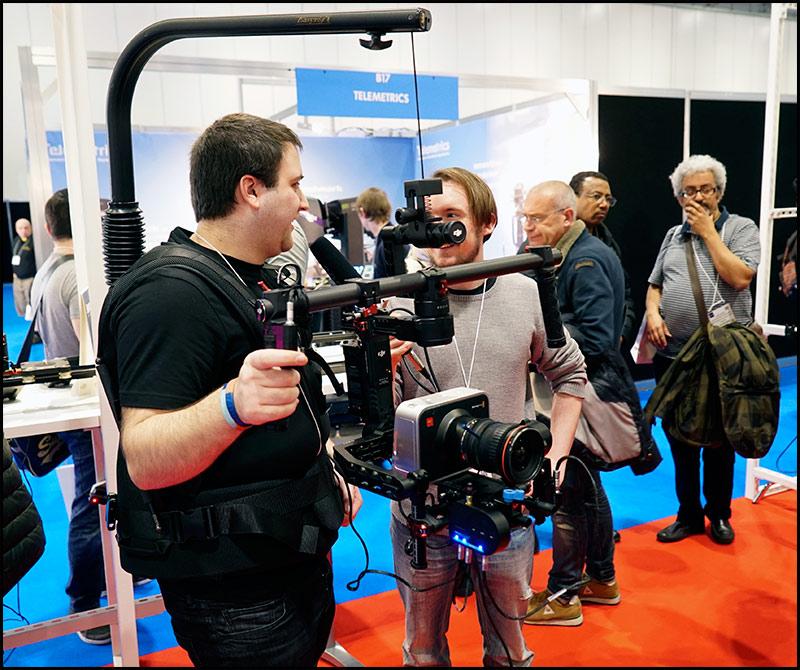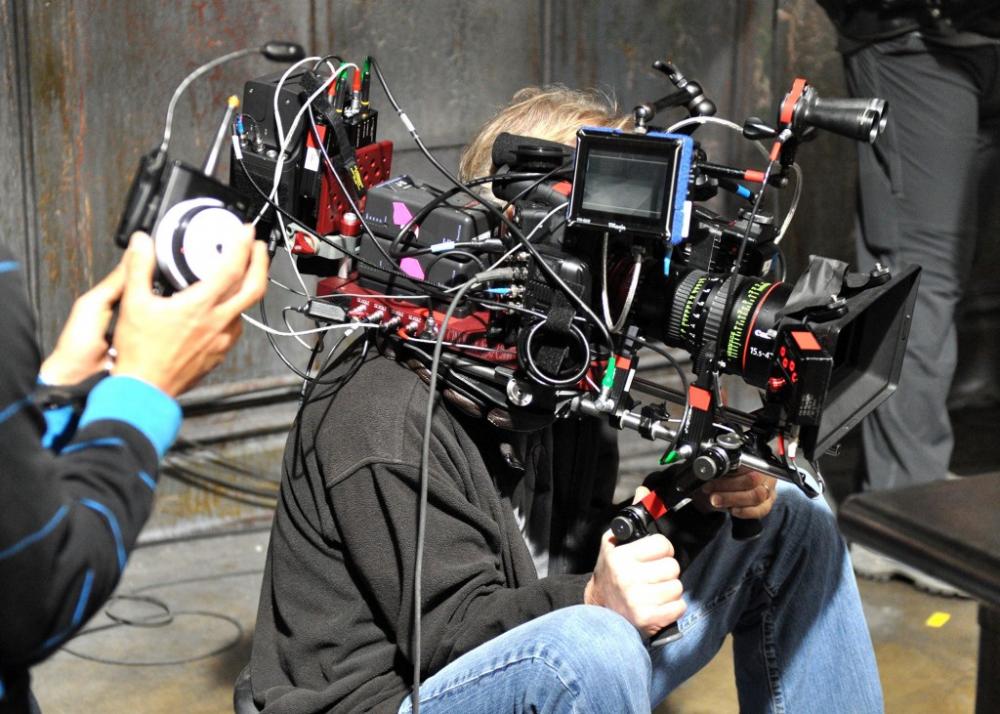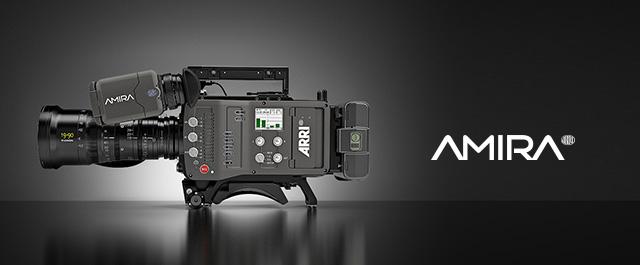
wernst
Members-
Posts
15 -
Joined
-
Last visited
About wernst

Profile Information
-
Gender
Not Telling
-
Location
Germany
Recent Profile Visitors
1,936 profile views
wernst's Achievements

Member (2/5)
6
Reputation
-
 JurijTurnsek reacted to a post in a topic:
Why the camera press need to grow a pair of balls
JurijTurnsek reacted to a post in a topic:
Why the camera press need to grow a pair of balls
-
 Orangenz reacted to a post in a topic:
Why the camera press need to grow a pair of balls
Orangenz reacted to a post in a topic:
Why the camera press need to grow a pair of balls
-
It’s a law of nature of marketing a new product: the less quality you are offering the more noise you have to make. It’s as simple as this. The Pharmaceutical Industrie is the best proof for this law. New drugs, being as ineffective as the previous generation, have to pushed hard, e.g. on one week events for the so called oppinion leaders in the Carribean, Hawaii and locations like this, of course with spouses. An invitation to Hawaii for the so called "camera journalists" (unfortunately only 2 days, no spouses) tells me that the new product is not worth considering at all. Industrial Products Sales Manager, Germany
-
For those in love with the FULL FRAME look which system gets closest in 4K?
wernst replied to Andrew Reid's topic in Cameras
Andrew, just for my understanding. Your key sentence for me was: “. . . when we refer to full frame video, we only take into account the horizontal crop and take the different aspect ratio for granted.” In the case for the actual GH4 it means: GH4 Sensor: 4608:3456 (4:3) GH4 QFHD: 3840:2160 (16:9) which is 52% of the GH4 sensor area. For the upcoming GH5 “full sensor readout” has been announced. Taken the same sensor dimensions into account it will then use 4608 horizontal Pixels for 16:9 4k video, which means 4608:2592 pixels are used: This is 75% of the sensor area. As result, the new GH5 will use 50% more of the sensor area, but - of course - per se it can’t be “true” 100% full sensor readout for video. I know, everybody has understood this except me. Sometimes it needs post like yours, Andrew, to understand basics, at least for me. Thanks. -
Weight is the only solution? I don't think so. Big masses of steadycams have their specific, inherent problems. (“laws of physics” well discovered in Scotland . . . ) My experiences with rigs “with a bunch of mass” are simply painful. Trying to balance these rigs takes hours. And after swopping a single piece, e.g. the battery with another type and weight you have to balance it again from zero. To set up the in-cam stabilization of the EM5II is just switching ON the camera. Yes, the EM5II has still some issues, e.g. with pan. Interestingly the “real thing” has the same kind of stabilization problem, e.g. the after drift when a pan stops. (inertia, mass vs. gimbal) Trying to keep systems as simple as possible is my credo. A while ago Andrew has asked here: “Does downgrading your equipment to simpler more basic models make you more creative?” He himself gave the answer: “Creativity comes from constraints”. I fully agree. A shot with some imperfections in stability taken within seconds is better than missing a shot because it would have taken 1 hour to setup the steadycam. Or for your convenience you have left your heavy steadycam at home or in the car anyway. For well-arranged studio type of scenery any system for the best possible IQ will be chosen. For travel or documentary style shooting I prefer an easy and simple solution.
-
Yes, fuzzy, you’re right, the EM5II is close but not fully comparable to “true” steady cam rigs - yet. TMO it’s just a matter of less than one year and we will see solutions which don’t need “some sort of rig with a bunch of mass” or external x-axis gimbal rigs. Just google “Sony Balanced Optical Steady Shot” (BOSS), see some footage taken with this system and you’ll see what I mean. I own a Sony CX730 (prosumer) camcorder with BOSS just because of this incredible stabilization power. Unfortunately the IQ is based on a 1/3"sensor. I've tested it under different hand held conditions and I can say it's truly amazing, a truly comparable solution to any kind of existing external staedy cam rigs. It makes me believe that highly effective in cam stabilization will be a standard feature in less than 1 year from now.
-
Holding a 3-axis gimble stick to avoid shaking? Complaints that this camera can’t be operated separately? Fixed lens, no RAW? Do you forget that there are already serious mft/full frame cameras with 5-axis IN (!) camera stabilizations on the market? For much less than the mft X5R alone? In 2016 we will see cameras with highly advanced 5-axis in camera stabilization from Olympus, Sony - and Panasonic. I’m sure about this, just wait. These cameras will have stabilization systems with stabilization power comparable to the gigantic steady cam rigs, Movi-type systems or recent stick solutions. The evolution of stabilization systems goes from monster to smart solutions. The endpoint of this evolution is IN camera stabilization, the stabilization of the sensor. Some years ago Sony has demonstrated what their “Balanced-Optical-Steady-Shot” system can do (in some of their consumer camcorders, even 4k) Amazing. Keep it as simple as possible, not from behind through the chest. As Andrew has stated a while ago: The art of downgrading.
-
 wernst reacted to a post in a topic:
There is a new 4K Panasonic camera coming at NAB
wernst reacted to a post in a topic:
There is a new 4K Panasonic camera coming at NAB
-
 wernst reacted to a post in a topic:
There is a new 4K Panasonic camera coming at NAB
wernst reacted to a post in a topic:
There is a new 4K Panasonic camera coming at NAB
-
I’m dreaming of the new Panasonic AF400 camcorder with 4k organic CMOS image sensor with 16 stops DR with ISO performance up to 12.800 with low light performance only showing “one grain of salt" . . . noise with interchangeable mft mount with price tag 4k$ If your dreams don’t scare you, they’re not big enough
-
 IronFilm reacted to a post in a topic:
Canon XC10 4K camcorder
IronFilm reacted to a post in a topic:
Canon XC10 4K camcorder
-
I could not imagine that Canon consistently drives the mediocrity. Yes, they can. 1“ sensor, fixed f2.8-5.6, 64 GB CFast 2.0 for 4k ~ 300,- € !! (64 GB SDXC 10/3 for 4k in GH4 ~ 35 €) No EVF, touch screen is nice, but it’s not usable when loupe is mounted to it 2.500 $??!! Get a GH4 with 2.8/12-35 instead and you'll have the real thing. I understand better what Canon‘s branding effort means: “Canon See Impossible” - We see that it is impossible to catch up with competition
-
 wernst reacted to a post in a topic:
Canon XC10 4K camcorder
wernst reacted to a post in a topic:
Canon XC10 4K camcorder
-
 wernst reacted to a post in a topic:
Canon XC10 4K camcorder
wernst reacted to a post in a topic:
Canon XC10 4K camcorder
-
 wernst reacted to a post in a topic:
Canon XC10 4K camcorder
wernst reacted to a post in a topic:
Canon XC10 4K camcorder
-
I’m fully behind your statement, that the learning curve in using gear first goes more to professional and later back to more basic, simpler gear. I can tell it from my own experiences. You ask yourself: What do I really need for framing my inspired ideas into an image? Over time you are gaining experience which is gear is useless and which is suitable for mastering your ideas. But you are not becoming per se creative in an artistic sense during this process. Your level of artistic creativity stays unchanged. You only become smart in assessing how far may I downgrade my gear to the point where simplicity does not limit the realization of my artistic ideas? You may e.g. realize that putting a RX100 into your pocket and leave your clunky 5DIII / 70-200 combo at home will open new possibilities for catching moments which would have never been caught before. This is smart and clever, but not yet creative. Without creativity in your DNA you may upgrade or downgrade your gear, it doesn’t matter, the artistic value of your images stays the same. provocative thesis: If creativity comes from constraints, then pick from each of the numerous gear reviews those pieces with the most negative ratings, having the most "cons", constraints, and you are done - you then will become creative. Won't you?
-
Yes, IronFilm, you are right, it’s not an A7s, it’s a C300 or C500. But regardless of the type of camera rigged, the main question is, does complexity block creativity? I think the image tells. Another aspect which has not been covered here is complexity as the cause of a failure. Common sense suggests, that the degree of system complexity is closely related to the rate of failure of a system component. Considering e.g. the numerous cable connections of this rig shown above it is likely that one or more may fail. In this case not only creativity is blocked but total productivity . . . . . . The art of downgrading: A GH4 with YAGH may save the 4k shooting then.
-
“Reduce to the max" is a well thought slogan for the people who are supposed to buy this life style car. This slogan sounds wise, almost philosophical, but it is somehow quirky. It pushes the perception: going small makes you big. For the smart car buyer this kind of "basic" minimalism has to be state of his mind, otherwise he would not swallow the numerous limitations this “car” has. And, it is certainly not an expression of creativity driving a vehicle as this. “The art of downgrading” does not only refer to the size of the gear. If I understand Andrew’s headline right, he describes how the complexity of different technologies may block his creativity. Yes, when I switched from analog to digital photography (perceived 50 years ago) I was fully absorbed from the new technology behind it. All creativity (if there was any) was only used to master the new camera functions (EOS 300D). Today I feel save to handle the increasing number of new functions which each generation of cameras invents. “The glory of technology” as Andrew said elsewhere in his blog. Some of the new functions are gimmicky, some inspired me to create images which I wasn't able to frame before, e.g. in camera time lapse. This is now as simple as possible, though it’s not a simple technique. Albert Einstein: "Make things as simple as possible, but not simpler".
-
 Axel reacted to a post in a topic:
The art of downgrading
Axel reacted to a post in a topic:
The art of downgrading
-
“Simplicity is divine” says Kim Olson. “People often make things more complicated than they need to be. And that’s especially true with photography”. The photo below is from Philip Johnston’s blog “HD warrior”. It was taken at “Production Gear BVE 2015”. I think the camera man is smiling because he is happy because after 2 hours of rigging and adjusting he finally got his stabilizer up and running. The question is: Why does a small camera as the BM Cinema need a huge stabilizer as such? I think this rig doesn't inspire creativity, it absorbs all creativity for the technique only. The photo below was taken from 4Kshooters.net . You can’t see the camera, it’s a Sony A7s. It's rigged to a bizarre degree of complexity. Downgrading is not an option here as serious filmmaking is required. Why not UPGRADE for more advanced technology ? e.g. take the Arri Amira. Well-designed ergonomics simplifies complexity. It leaves more freedom for creating artistic results. Downgrading gear technology for the sake of creativity is not per se divine. The right technology UPGRADE may also inspire creativity.
-
 wernst reacted to a post in a topic:
Canon's GH4 "Competitor"
wernst reacted to a post in a topic:
Canon's GH4 "Competitor"
-
 Cinegain reacted to a post in a topic:
The art of downgrading
Cinegain reacted to a post in a topic:
The art of downgrading
-
I’m sorry, Eleison, I’m afraid I didn’t get the point from your “pies and girls” examples. The question here is not whether too many pies or too many girls spoil the fun. Andrew asked a valuable question: “Does downgrading your equipment to simpler, more basic models make you more creative?” Creativity is the key here. Assumption: Less technology, more minimalism inspires creativity - this is the art of downgrading. But, is it really true? A lot of talks on modern minimalism discuss whether minimalists should avoid technology. How to achieve minimalism? With or without technology in order to become more creative? Andrew, you have given some examples why “technology is a drug”, which blocks your creativity. The “hypnotic Galaxy Edge” blocks you from writing lyrics, the old iPhone doesn’t. Neither of these smart phones would block my creativity of writing lyrics. (I’m not a poet anyway) Sitting in the Berlin U-Bahn is not a romantic and inspiring environment at all, regardless of the writing tool. (I know what I’m talking about). Is minimalism and technology compatible? Does minimalism inspire creativity? A creative artist will find his way to frame and create his art work, regardless of tools and quality of the tools. Should an art painter use more simple brushes or extra cheap paint just to increase his creativity? Would I become a more creative photographer just because I exhume my old EOS 300D and retire my 5DIII and new GH4? Why not downgrading even deeper and going back to analog film. The good old film has a DR of about 14 - 15 stops. Not many of our today’s digital cams can yet keep up here. “A myriad of choices presents a mountain of distractions.” Andrew says. Yes, it’s true, when being in Disney Land or in a shopping mall. The numerous choices of my GH4 settings doesn’t prevent me from creating the imaging task as wanted. In manual mode I can freely pick the basic settings, the crammed full menu doesn’t block my creativity - provided I have some. But when I want to frame an extra touch to the images, e.g. HDR, slow mo or a time laps, I’m glad that my trusty new camera helps me with its latest technology - going creative. “The downgrade (. .from a class leading EVF . . to a boring old mirror box. .) worked by giving me a more responsive way to capture moments and less choices to consider whilst doing so.” Andrew says. Less choices give more responsiveness? Why then critisize Canon of being slow in their technology development? Canon delivers “last era” equipment - already downgraded to less choices ex-factory.
-
Andrew Reid, November 20, 2014: “The glory of technology” (Samsung NX1 Review) . . .”However the world would be a very dull place without them and I do think all this technology is leading somewhere” Does it mean more technology is better? Andrew Reid, March 23, 2015: “The art of downgrading” (from Fuji X-T1 to Canon 70D) . . . “It felt like a direct extension of me somehow” Does it mean “less technology is more”? ???
-
Does Cinema EOS mark the end of high spec Canon DSLR video?
wernst replied to Andrew Reid's topic in Cameras
I have gone through Canon’s financial results of QII/14 published recently. In short: Canon reported an increased profit despite decreased net sales volume. Canon is quite a healthy company. They have almost 0.75 billion $ cash. This might also be their main problem. Canon’s business structures have gained overweight and overhead, they can’t move fast anymore. And we should learn that Canon doesn’t need to talk or listen to their customers as long as the shareholders are happy. The stock quote (in average) is healthy. None of the shareholders are interested in e.g. codecs or 4k resolution. They only have their investment in mind, if it is profitable it is fine. Conclusion: Don’t do anything then you won’t do anything wrong. (It’s an attitude which is commonly known from politicians) This “rule of fool†holds true for selling whisk(e)y or bathroom tissues, sure not for high tech products. Canon’s “rich man’s demeanor†overrules the common understanding that innovation is the primary force that pushes a company to market leadership and keeps it ahead of its rivals. An increasing technology gap between Canon and competition may be compensated with money - for a while. But once this gap is wide enough the race is over. Canon then will not be able to catch up even with all their money they have. I have come to understand Canon’s garbled marketing motto “SEE IMPOSSIBLE†as: “We at Canon SEE that it is IMPOSSIBLE to catch up with our competition†-
 dukerem reacted to a post in a topic:
Photokina report day 1 - the Samsung NX1 (4K mirrorless camera with H.265)
dukerem reacted to a post in a topic:
Photokina report day 1 - the Samsung NX1 (4K mirrorless camera with H.265)
-
Photokina report day 1 - the Samsung NX1 (4K mirrorless camera with H.265)
wernst replied to Andrew Reid's topic in Cameras
The h.265 codec is not any faint innovation but a true video revolution. Even Sony and Panny, the only noticeable and remianing "Video Players" didn't manage to implement this codec up to now. All video folks, who are now running behind 4k video, will be frustrated as soon as they start editing their valuable 4k footage: Monster files digested in slow PC's. H.265 is the forward looking solution for all future 4k video application. But I am really surprised about Samsung's statement to a question raised whether e.g. Adobe's PremPro would support importing h.265 coded files taken on the NX1. Samsung (to Michael Boldin, see forum): " I'm afraid we don not have exact information on the features available on Adobe Premiere Pro. Please contact Adobe support for exact information" ??? Did Samsung implement the h.265 codec without any thorough marketing analysis which workflow solutions will support this codec? Without broad support for 4k/h.265 video editing any decision for the NX1 has to be considered carefully.




